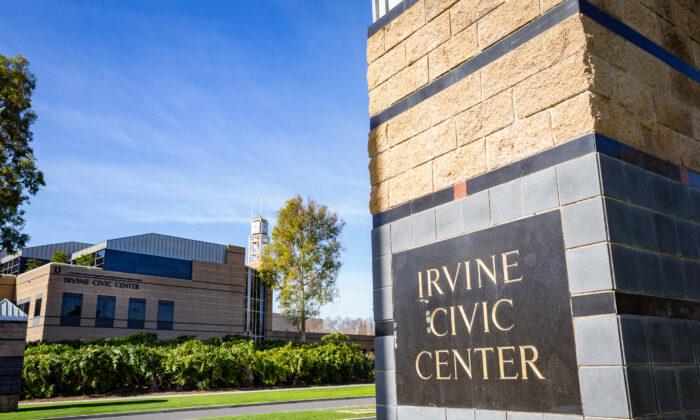Orange County Power Authority (OCPA) arrived on the scene promising to deliver astounding amounts of uber-clean electricity to consumers it switched, without consumers’ knowledge, from Southern California Edison (Edison) into its own clean energy program.
A simple review identifies OCPA can’t even provide half of what it claims.
All Californians throughout the state receive the same mix of energy from California’s electric grid—the giant transmission towers and spiderweb of wires that span over the state and help deliver power from disparately located power plants. [1]
Power flowing onto the grid is produced by a combination, or mix, of what is known as “base load” electricity and “intermittent” electricity.
Over-promising, Under-delivering
California’s electric grid cannot function without a steady supply of electricity from base load resources flowing over its wires. Base load includes gas-fired, coal-fired, nuclear, geothermal, and large hydroelectric power plants.- A given amount of steady and reliable base load generation is required each day, throughout the day, depending on projected electricity demand for the state, including reactive power.
- Second, grid operators accommodate, or allow intermittent energy onto the electric grid in accordance with Sacramento law, AB 32, which encompasses the regulations for California’s clean energy rollout, the Renewable Portfolio Standard.
A second compounding issue for solar power (and wind to a lesser extent) is the timing of its production. Rather than arriving to the grid as a steady supply over a 24-hour period, solar arrives in a giant wave. Everyday. That wave dwarfs California’s energy demand because much of the solar power cannot be consumed when it arrives.
The following image shows the daily arrival of this disruptive supply that must be addressed before the grid goes into an imbalanced condition where energy supply exceeds energy demand, causing a blackout.
California’s grid operators regularly order solar farms to stop sending much of their power to the grid, or order less of it. Nevada and Arizona are periodically paid to take California’s over-supply in a costly practice known as negative-pricing (paid for by OCPA).
All of these measures, which keep that over-supply of solar off the grid where it would cause a blackout and damage the system, are what the electric industry refers to as “curtailment.” Each of these cost OCPA money, your money in the form of higher electricity prices.
Renewables’ Buried Pollution
Even if newly developed battery technology eventually solves storage issues, where do OCPA and the rest of California find several million acres for all of the wind and solar, plus twice that acreage for dedicated battery charging? The wind does not always blow in the new energy world. [2]When electricity shortages arrive with a Green New Deal-type system that does not properly function, OCPA’s touted Basic Choice product’s “at-parity-with-Edison” prices will skyrocket, putting a decidedly different perspective on the agency’s simplistic view of the market. [3]
An example of the coming impracticality is easy to consider. Closure of Diablo Canyon nuclear plant, scheduled for 2024 and 2025, would require a wind farm occupying approximately one-half million acres to replace the nuclear plant’s electricity output. Add another 1 million+ acres for dedicated battery charging. [4]
Where is that land? What about required land for windmills and solar farms after all of California’s other power plants are dismantled? There is discussion of placing these resources off of the coast (in the fog and shipping lanes).
None of this is to disregard the pollution and mining associated with manufacturing OCPA’s solar panels and windmills, in addition to end-of-life disposal issues.
What happens to that waste?

California’s electricity outlook is unstable as the state races toward a future that is anything but “renewable” or environmentally sensitive, a future increasingly reliant on intermittent wind and solar generation.
Governor Newsom and President Biden are undermining electric reliability and stability with policies that support retirement of base load type gas and coal power plants—needed when the power from “clean” intermittent renewables declines.
Part III of this series pulls back the curtain on OCPA’s renewable energy products, revealing the extent of its unfulfillable promises and the wasted money for shell games that leave the community no better off.
[1] Municipal utilities such as Los Angeles Department of Water & Power (LADWP) operate their own transmission systems. In 2020 LADWP’s reported renewable energy content included in its overall energy mix was 36.7 percent, slightly higher than California’s 33.09 percent of the state’s total energy mix.
[3] OCPA board chair Mike Carroll at April 5, 2022 board meeting: “But I just wanted to say what really jumped out at me, other than all the detail and the sheer breadth of the fact that we’re going to be, or that we are, the greenest or one of the greenest electric providers in the nation … which is really fun as that … rolls off the tongue.”
[4] Diablo Canyon nuclear plant is scheduled to close in 2024 and 2025. There is discussion about possibly delaying those dates; however, such an arrangement is complex, time consuming, and involves multiple parties with differing agendas.







